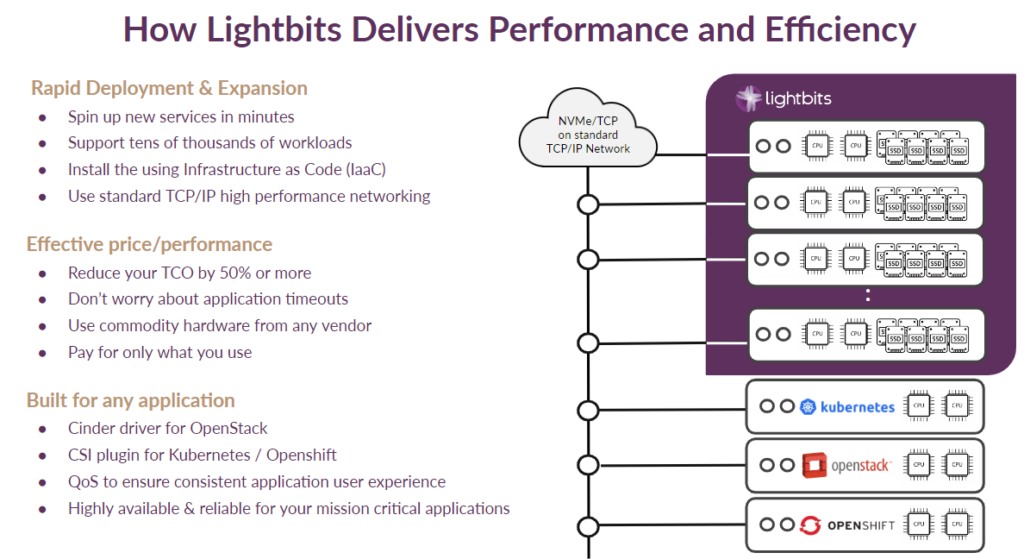 I recently had the privilege of joining a panel session hosted by the Financial Information Forum (FIF) as part of their Emerging Technologies Series. Alongside industry leaders such as Steve Bonanno, CEO of BSX, and John Iacone, Co-founder of IIS, and hosted by Kevin McCabe, FIF’s Program Manager, we explored how software-defined storage (SDS) is transforming financial services by enhancing real-time analytics, AI, and large-scale data management.
I recently had the privilege of joining a panel session hosted by the Financial Information Forum (FIF) as part of their Emerging Technologies Series. Alongside industry leaders such as Steve Bonanno, CEO of BSX, and John Iacone, Co-founder of IIS, and hosted by Kevin McCabe, FIF’s Program Manager, we explored how software-defined storage (SDS) is transforming financial services by enhancing real-time analytics, AI, and large-scale data management.
Roundtable Insights
The session began with a discussion about the major challenges financial services firms face today. The explosion of real-time data is pushing the boundaries of traditional infrastructures. The goal is no longer just to process huge volumes of data, but to extract actionable insights within milliseconds. This is especially critical for tasks like fraud detection and split-second trading decisions.
I shared my perspective on how financial institutions are increasingly turning to SDS built on NVMe® over TCP to address these demands. Transitioning from legacy SAN and hyper-converged infrastructures (HCI) enables banks and financial organizations to manage real-time analytics and AI-driven applications with much greater efficiency. By focusing on reducing latency and improving throughput, SDS platforms are transforming essential use cases like real-time risk analysis and AI-powered insights.

Assuming You Have Enough GPUs
AI’s role in financial services is growing rapidly, with use cases ranging from predictive analytics, lending decisions, and risk assessment to automated customer support. However, AI workloads are data-intensive, requiring infrastructure capable of extreme scalability and low latency. SDS platforms leveraging NVMe/TCP provide the agility and performance necessary to fully unlock AI’s potential. For example, investment banks have been able to significantly reduce latency in their real-time trading systems by deploying SDS, enabling them to make faster, more accurate decisions.
VMware’s Broadcom Transition: The Financial Impact
We also discussed the recent changes from Broadcom/VMware and the implications for financial services. VMware’s shift in pricing, licensing models, and support structures has prompted many financial institutions to reconsider their reliance on traditional virtualization solutions. With rising costs and increasingly complex support requirements, many firms are exploring open-source alternatives like OpenStack and Kubernetes. These platforms offer more scalable and cost-effective solutions, allowing financial firms to take full control of their expenses, support, and deployment models. Additionally, the adoption of containers and cloud-native architectures is freeing companies from VMware’s constraints, enabling more agile and cost-efficient infrastructures.
Cloud First vs. Repatriation
The approach to public cloud adoption within financial services is also evolving. While some firms initially embraced a “cloud-first” strategy, many are now focusing on an “application-based strategy”. Concerns over cost, performance, and compliance are prompting institutions to repatriate certain critical workloads back to their private cloud environments.
SDS plays a pivotal role in this hybrid approach, providing the flexibility to seamlessly manage workloads across both public and private clouds. Financial firms can scale their infrastructure effortlessly while maintaining control over their critical databases and AI workloads, ensuring compliance and meeting SLAs for their customers.
Financial Services Leading the Charge in SDS
You may be surprised to know that Financial services firms have been early adopters of SDS, moving away from proprietary SANs and Fibre Channel (FC) networking. By building cloud-native environments on-premise, they gain flexibility, cost savings, and scalability. When paired with NVMe/TCP, SDS solutions deliver ultra-low latency and seamless scaling for real-time analytics and AI, which has been a game-changer for many institutions.
Conclusion
This FIF panel made it clear: the financial services industry is at a pivotal moment. Tech leaders are reevaluating their cloud and infrastructure strategies to address the explosion of data, improve rapid deployment, and ensure scalability while maintaining high-quality SLAs and cost structures for their customers. Whether the focus is on AI, real-time analytics, or hybrid cloud deployments, SDS is a key factor in maintaining a competitive advantage in the fast-paced financial landscape.
Ready to modernize your data center or build your services cloud on a modern, software-defined architecture contact us today for a free product demonstration.

